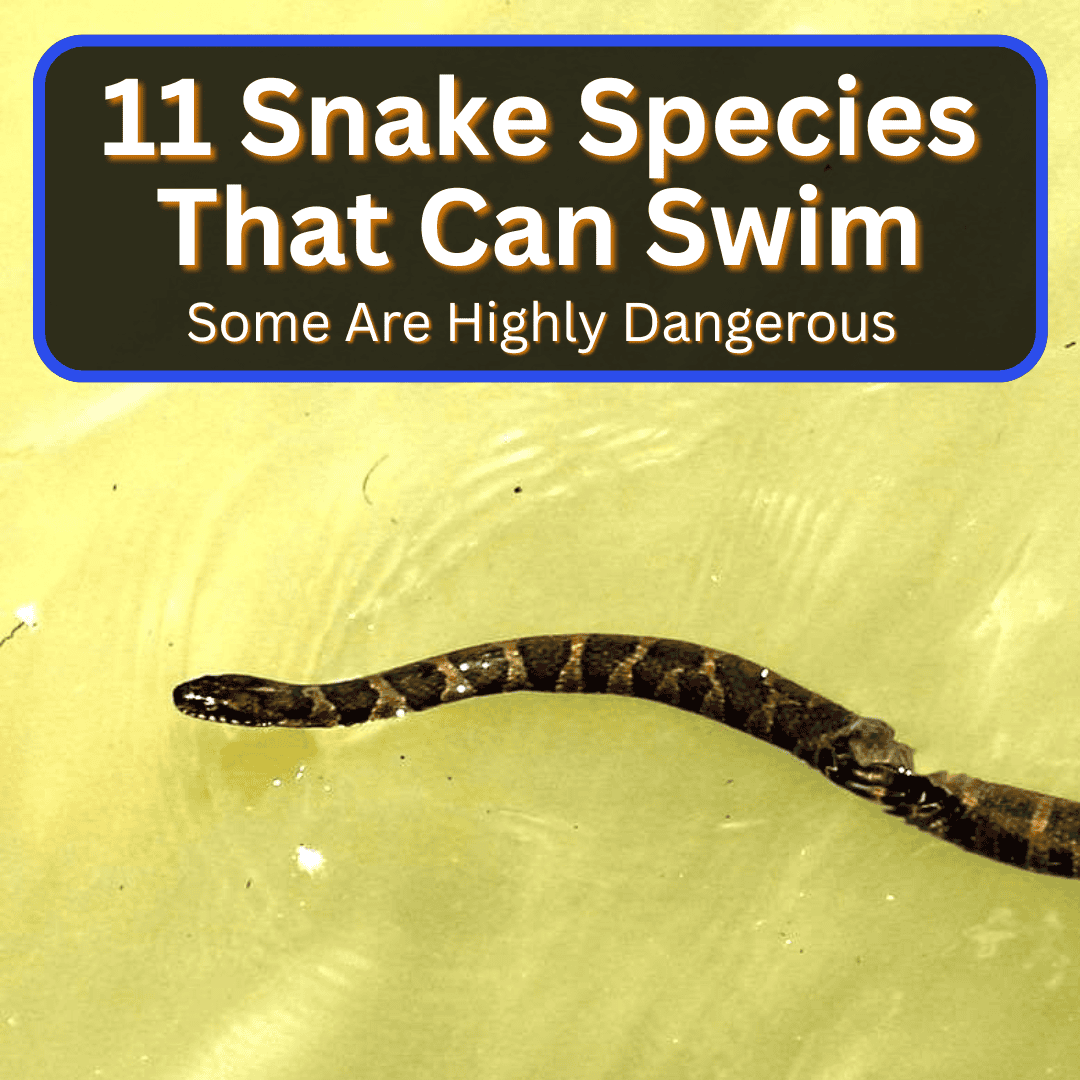
But the truth is: all snakes can swim.
That said, some species are much better at it than others.
They spend nearly their whole lives in water, while others only swim when they have to, be it to hunt, escape a predator, or just get from point A to point B.
Sea snakes are a good example. They have paddle-shaped tails that make them naturals in the water.
Others, like cobras and anacondas, manage just fine even though they’re mostly land-based.
Knowing which snakes are good swimmers can help you stay safe around water. And honestly, it’s all pretty fascinating, too.
Snake Species That Can Swim
As mentioned, ever snake can swim. But the 11 species below are better at it than most. As expected, there are a few sea snakes on the list, but also some unexpected entrants.
1. Olive Sea Snake
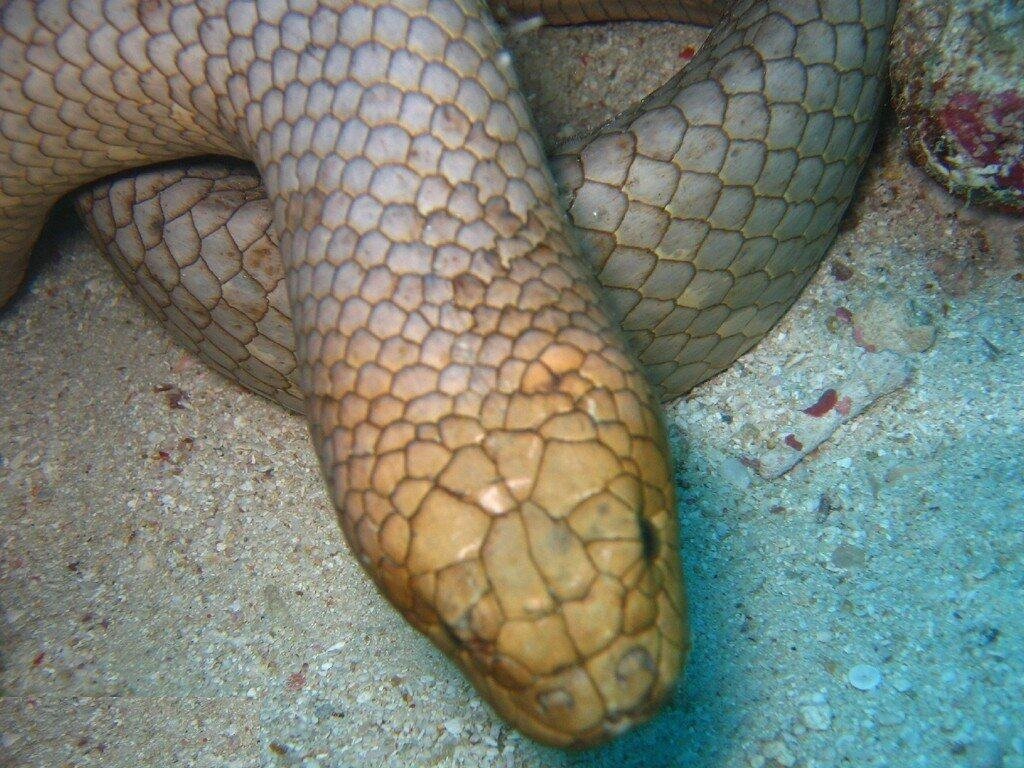
Olive sea snakes live in the warm ocean waters of the Pacific and Indian Oceans. They spend almost all their time underwater. They’ve got flat, paddle-like tails that act like little propellers, letting them zip through coral reefs with ease.
If you ever spot one swimming, you’ll see how effortlessly they glide. They can hold their breath for up to two hours while hunting for fish and eels. Special valves in their nostrils snap shut when they dive, keeping water out.
Olive sea snakes are venomous, but they usually leave people alone. If you bump into one while swimming, it’s best to give it some space.
Their bodies are really made for water. On land, they’re clumsy—those flat tails don’t help much with crawling. They stick to Indo-Pacific waters; you won’t find them in the Atlantic or Gulf of Mexico.
2. Yellow-Bellied Sea Snake
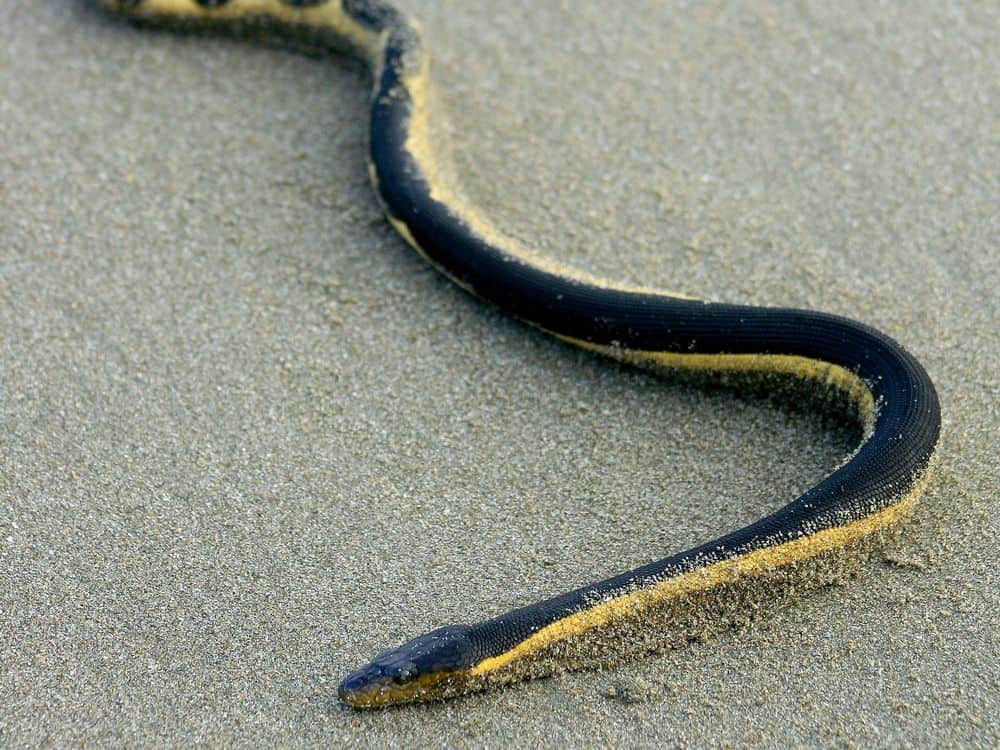
You can recognize the yellow-bellied sea snake by its striking two-tone look: dark on top, bright yellow underneath. This snake lives its whole life in the ocean, mostly in the tropics of the Pacific and Indian Oceans—not the Atlantic.
Its body is flattened side to side, and the tail acts like a paddle, making it a strong swimmer. It’s highly venomous, but since it lives far from shore, it’s rarely a problem for people.
Yellow-bellied sea snakes hunt by floating on the surface and waiting for small fish to take shelter beneath them. Then, they strike.
They can swim both forward and backward, reaching speeds up to 1 meter per second. They spend a lot of time diving, sometimes down to 50 meters, and even give birth to live young right in the water.
3. Yellow-Lipped Sea Krait
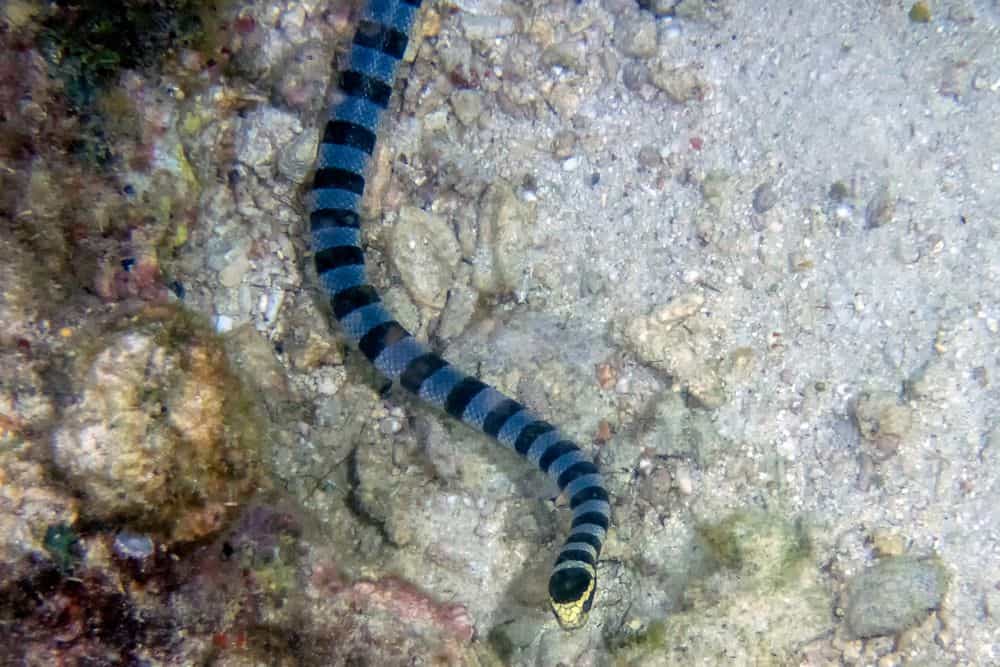
The yellow-lipped sea krait hangs out in warm Indian and Pacific Ocean waters. It’s got black and white stripes and a bright yellow snout. It’s pretty hard to miss.
It is usually about 4 to 5 feet long and its smooth, round body is built for swimming. Its tail looks like a paddle, helping it dart and turn quickly underwater.
This snake splits its time between land and water. You might see it hunting in coral reefs or just chilling on a beach or rocky shore. It mainly eats eels hiding in reefs, using strong venom to catch them.
In the water, it moves with surprising grace. It can dive deep and stay down for a long time while hunting. But it needs land to rest and digest. Groups often gather on small islands or coastal spots to soak up the sun.
4. Anaconda
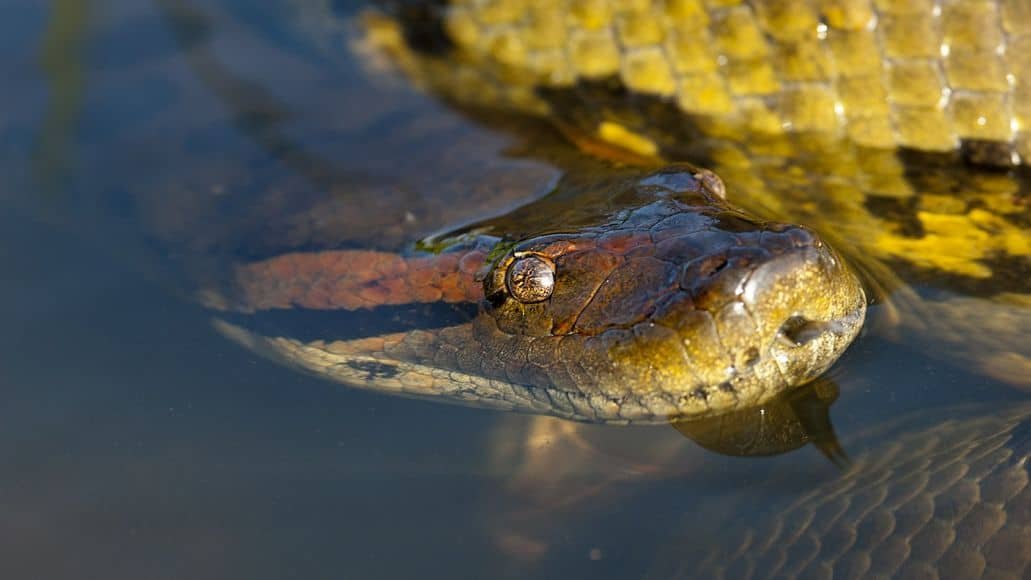
People often think of anacondas as giant land snakes, but they’re actually fantastic swimmers. They spend most of their lives in water. Anacondas are semi-aquatic and live in rivers, swamps, and marshes all over South America. Water is home base for them.
They use swimming for hunting, moving quietly through rivers and ponds to catch prey. Their massive size doesn’t slow them down in the water. Watch an anaconda swim and you’ll see how naturally they move. They can stay underwater for a long time, too.
Green anacondas are the best swimmers, but yellow, dark-spotted, and Bolivian anacondas are pretty good in water as well. All four types can swim.
Swimming lets them hunt fish, birds, and mammals that come to drink, and it supports their heavy bodies. If you’re ever in South American wetlands, remember: anacondas feel right at home in the water. They’re not just big—they’re built for this.
5. Water Moccasin
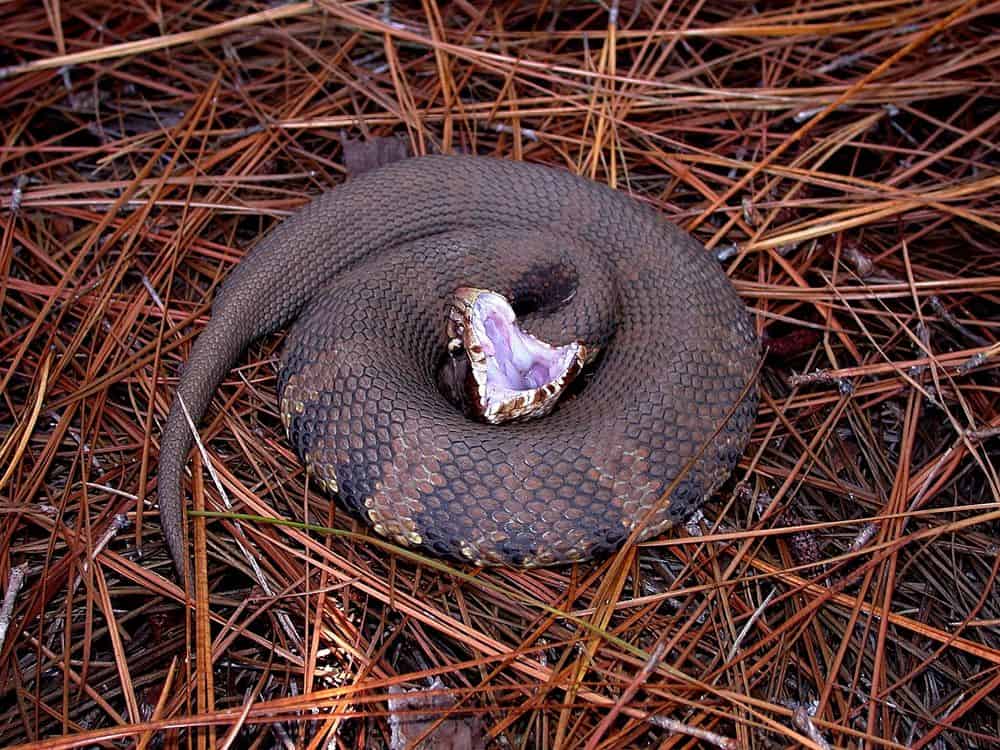
The water moccasin, or cottonmouth, is North America’s only venomous water snake. They’re found in the southeastern U.S., hanging out in wetlands, ponds, and slow rivers.
Water moccasins have thick, muscular bodies that can reach over 4 feet. Dark bands run across their scales. They’ve got wide, blocky heads and narrow necks, which helps you tell them apart from other water snakes.
When threatened, they open their mouths wide to show off the white lining. Hence the name “cottonmouth.” Be cautious around any snake in water; harmless water snakes often get mistaken for water moccasins.
Water moccasins swim really well and can bite underwater, which makes them a bit risky to encounter while swimming. They hunt fish and frogs, usually lying still and waiting to ambush their prey.
6. Northern Water Snake
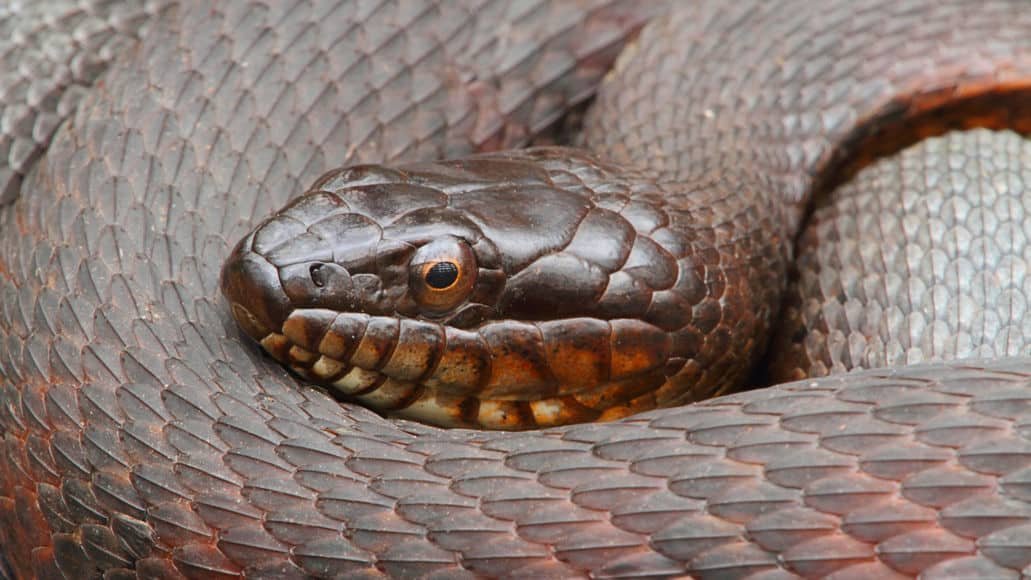
Northern water snakes live in freshwater all over eastern and central North America. They’re non-venomous but seriously impressive swimmers. They move easily on the water’s surface and underwater. Some would say they’re the Michael Phelps of snakes.
These snakes can hold their breath for up to 90 minutes if they have to, though usually it’s just about 5 minutes.
They’ve got heavy bodies and a range of colors and markings. People often mistake them for venomous cottonmouths, but northern water snakes are harmless.
They hunt fish, frogs, and other small water critters, splitting their time between water and land near lakes, rivers, and ponds.
Northern water snakes are also known as common water snakes or northern banded water snakes. Their olive-green to brown coloring helps them disappear among water plants and reeds.
7. Indian Cobra
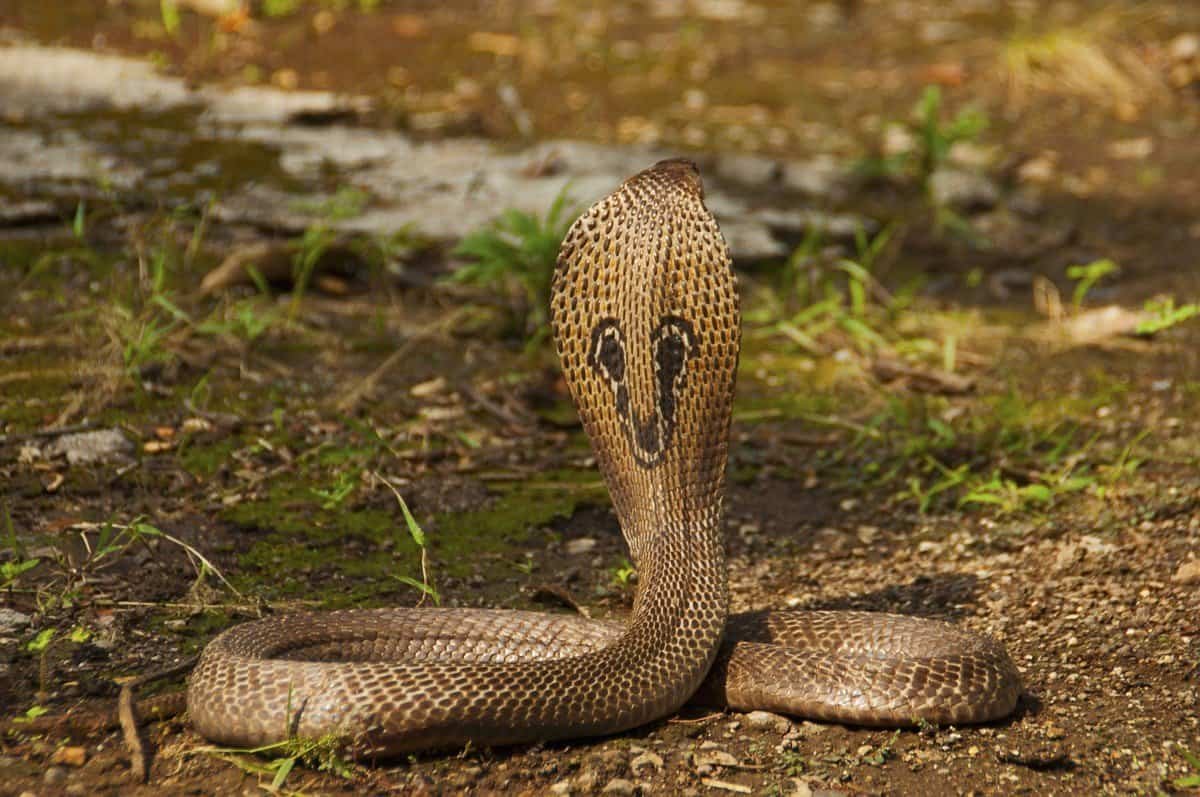
You might know the Indian cobra as the spectacled cobra or Asian cobra. It’s venomous and lives all over India.
Indian cobras can swim pretty well when they need to. You’ll often find them near rivers, ponds, and wetlands, hunting for food. In water, they move with smooth, wave-like motions, keeping their heads above the surface as they swim along.
They’re skilled hunters on land and in water, sometimes swimming across rivers or moving surprisingly fast in the water. Indian cobras swim to catch prey like fish, frogs, and other small animals near water. They’re strong enough swimmers to cross rivers in search of new territory.
If you spot an Indian cobra in water, stay back. They’re just as venomous in the water as on land.
8. King Cobra
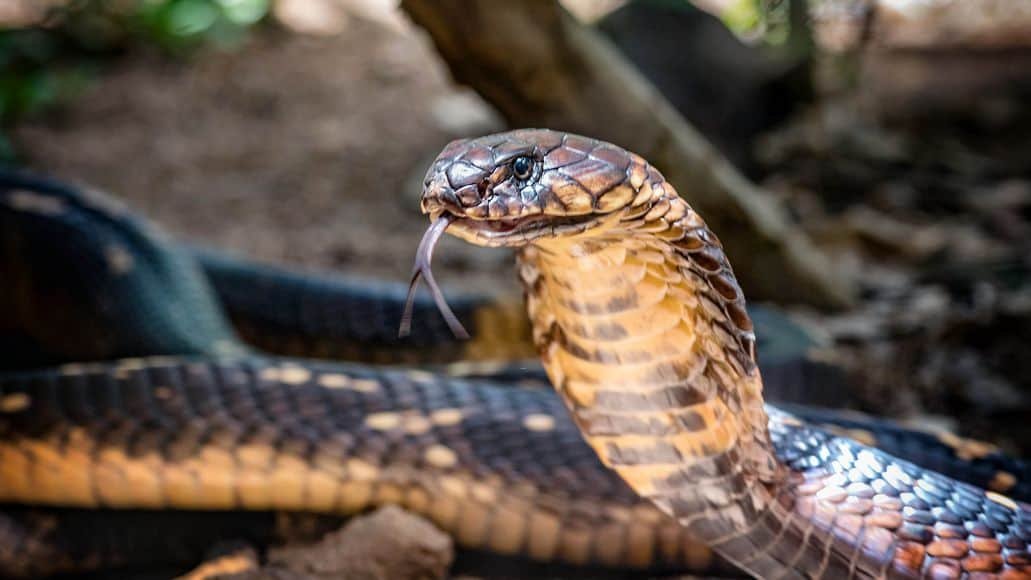
King cobras might surprise you. They’re actually great swimmers. They can flatten their bodies and glide across water with ease. They often swim across lakes and rivers while hunting for food, mainly other snakes. You’ll see them in habitats where mud snakes and rice paddy snakes live.
On land, they can rear up to a third of their 18-foot length. In water, they use a serpentine motion that lets them move forward smoothly. Their streamlined bodies help them in water just like in trees.
If you ever see a king cobra swimming, don’t panic. They’re usually just looking for food or trying to get away. They are not interested in people.
They’re not technically water snakes, but you’ll spot them in aquatic environments pretty often. King cobras are comfortable just about anywhere.
9. Eastern Worm Snake
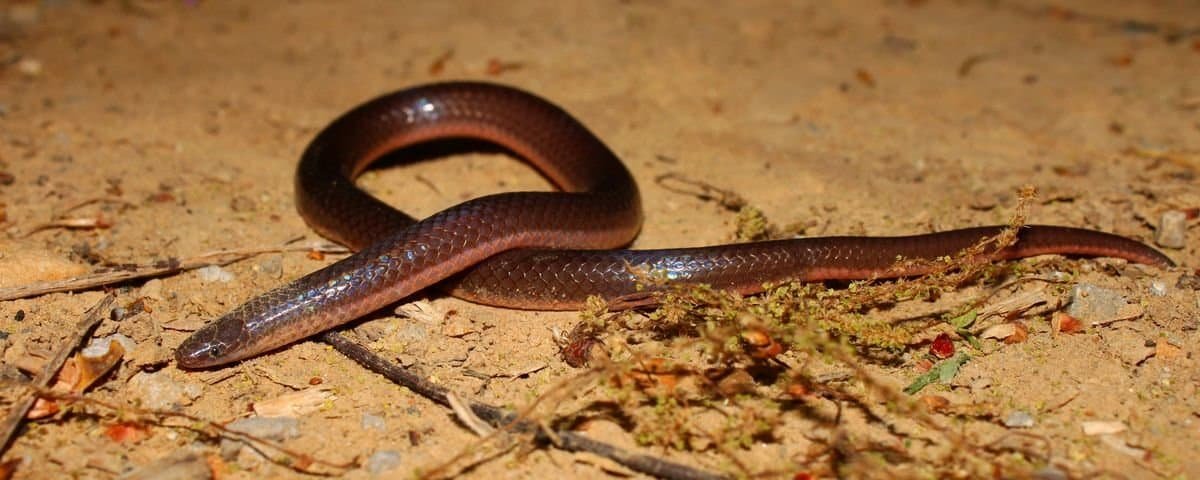
At first glance, you might think the eastern worm snake is just an earthworm. These tiny snakes only grow 7 to 11 inches and are a pale brown color. They range from Massachusetts down to Alabama and west to Louisiana, mostly in wooded areas of the eastern U.S.
Eastern worm snakes aren’t venomous and won’t hurt you. They spend most of their lives underground or hiding in rotting logs. You rarely see them—they’re secretive, usually buried in soil or leaf litter during the day.
They can swim when they need to, though they don’t spend much time in water. Their small size and smooth scales let them slip through water if necessary.
You might find one near wetlands or at the edge of forests and wet areas. They eat earthworms and other tiny soil creatures. If you want to spot an eastern worm snake, you’d probably need to lift logs or sift through leaf piles. They’re active from March through December in warmer states.
10. Banded Water Snake
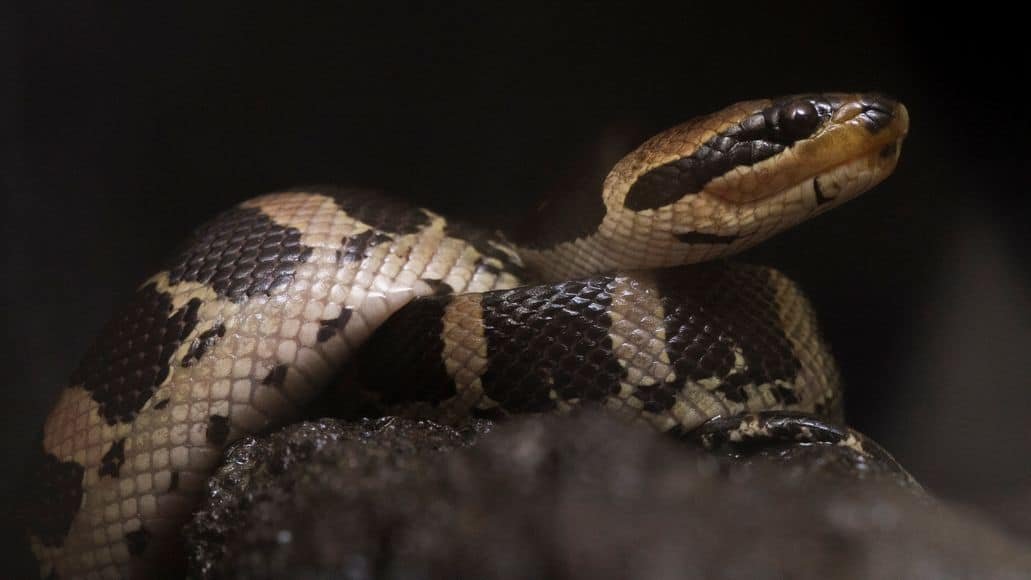
Banded water snakes live in rivers and ponds across the southeastern U.S. They love slow-moving water. They’re not venomous, but people often mix them up with water moccasins because of their dark bands.
You can usually tell them apart by how they swim: banded water snakes keep their bodies underwater with only their heads above. Venomous snakes tend to float right on top.
Banded water snakes are skilled swimmers, hunting fish and frogs in the water. They often wait motionless near the water’s edge, ready to ambush passing prey.
Dark bands cross their brown or gray bodies, helping them blend in with rocks and plants. If you see one, just let it be. They’re shy and usually slip away quickly when people get close.
How Snakes Adapt To Aquatic Environments
Snakes have developed all sorts of characteristics and behaviors that let them move through water—helping them hunt, escape, and thrive in wet places.
Physical Traits That Enable Swimming
Body shape really matters in the water, and snakes have some neat features that let them swim surprisingly well. Most aquatic snakes have tails that flatten out, almost like paddles, making it easier to push themselves forward.
Key Swimming Features:
- Flattened tails – Work as built-in rudders for steering
- Compressed bodies – Help cut down drag in the water
- Sealed nostrils – Close up tight to block water
- Special scales – Smoother texture helps them slip through water
Some snakes even have little valves in their nostrils that snap shut underwater, so water doesn’t get into their lungs when they dive. It’s a clever trick.
Water snakes usually have smoother scales than their land-based cousins, which helps them glide along without much resistance. Their muscles are no joke. Strong muscles along the body let them make those classic S-shaped waves that shove water backward and send the snake forward.
Behavioral Adaptations In Water
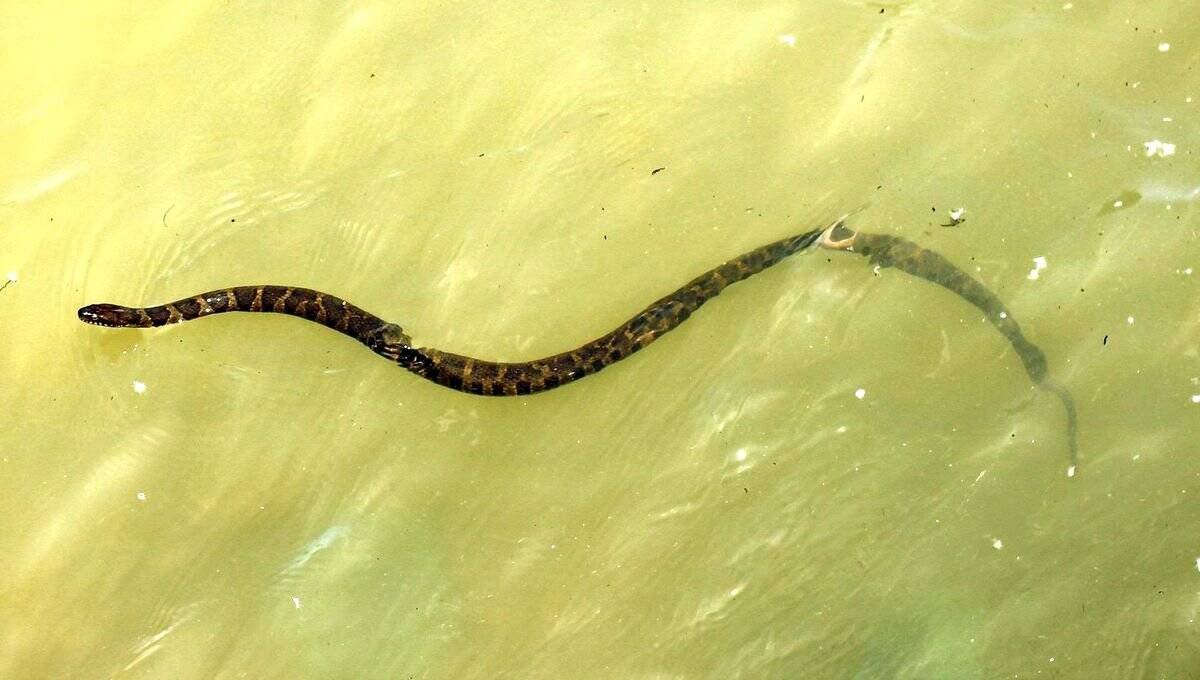
Water snakes act differently than land snakes when they’re in the water. They’ll change how they hunt, breathe, and move around in wet places.
Usually, swimming snakes keep their heads above water while their bodies stay below the surface. That way, they can breathe and keep an eye out for food at the same time.
Water Behaviors Include:
- Swimming in S-shaped waves
- Diving for fish and frogs
- Floating still to ambush prey
- Letting water currents do some of the work
Some snakes can hold their breath for up to 20 minutes while hunting underwater. They slow their heart rate to stretch out their oxygen supply. Water snakes often hunt during the day, when fish and frogs are active near the surface.
They’ll also use water temperature to their advantage, moving to warmer or cooler spots to manage their body heat. Pretty resourceful, honestly.
Safety Tips For Encountering Swimming Snakes
Snakes can pop up out of nowhere in lakes, rivers, or even pools. If you know what to look for and how to react, you’ll be a lot safer around them.
Recognizing Signs Of A Nearby Snake
- Watch for S-shaped movements on the water’s surface. Snakes make unique ripples as they swim.
- Keep an eye out for a raised head above the water. Most snakes swim with their heads up and bodies mostly hidden.
- Check shoreline areas before you jump in. Snakes like to rest on logs, rocks, or in tall grass right by the water.
- Listen for splashing sounds that don’t sound like fish or birds. Snakes tend to make their own kind of splash when they enter the water.
- Basking spots—fallen trees or sunny rocks—often attract snakes. Always scan these areas before you swim nearby.
- If you spot shed snake skins along the edge, it’s a sign snakes hang out there regularly.
What to Do If You See a Snake in Water
- Stay calm—don’t panic. Sudden movements can spook the snake and make things worse.
- Back away slowly. Move toward shore with steady, quiet motions.
- Give the snake plenty of space so it can leave. Most snakes will just swim off if you don’t bother them.
- Never try to catch or kill a swimming snake. That’s risky for you and, honestly, often illegal.
- Exit the water calmly if the snake is close. Try not to splash or shout.
- Wait at least 30 minutes before heading back in. That gives the snake a chance to move on.
- Call local wildlife officials if the snake looks injured or acts really odd. Better safe than sorry.
Snakes That Can Swim: Conclusion
All snakes can swim, but how good they are at it really depends on the species. Some glide through water like it’s second nature, while others only take a dip if they absolutely have to.
- Water-loving snakes—think sea snakes or water moccasins—spend most of their lives in the water. Their bodies have neat features that help them zip around with barely any effort.
- Land snakes can handle swimming too, though they’d rather stick to dry ground. Sometimes they’ll swim just to cross a river or get away from something that spooked them.
Most snakes swim by curving their bodies in those familiar S-shaped waves. It’s a pretty effective way to move forward in the water, honestly.
If you spot a snake in the water, it’s best to just leave it alone. Snakes don’t want anything to do with people and will usually swim off before you get close. Bites while swimming? Super rare—they’re just trying to get away.
It’s kind of amazing how adaptable snakes are. Whether they’re up in trees, slithering across land, or cruising through water, they always seem to find a way to make it work.
Leave a Reply